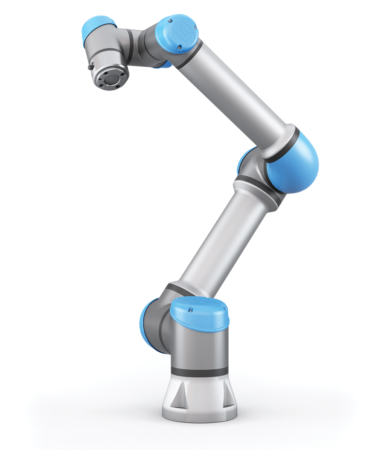
Innovation Insights: Six applications of automation, robotics, and AI in Canada
By Nestor Gomez
Automation Food Trends Technology Artificial Intelligence Canadian Food Innovation Network Editor pick Food innovation robotics Photo © Filipp / Adobe Stock
Photo © Filipp / Adobe Stock The Canadian food and beverage sector is embracing the age of automation, robotics, and artificial intelligence (AI) to transform the industry. From innovative products to improved supply chain processes, companies are leveraging these technologies to achieve greater efficiency, cost reduction, increased profit margins, and better environmental stewardship. Here’s how Canada’s food and beverage industry is being transformed using automation, robotics, and AI.
Supply chain optimization
Automation and AI streamline supply chain processes, enabling companies to operate more efficiently and cost-effectively. For instance, Toronto-based McCain Foods has enriched and enhanced its demand planning and production forecast through its investment in Fiddlehead Technology (Moncton, N.B.), a company specializing in data science and machine learning solutions for the food and beverage industry. This has allowed McCain to better manage inventory, reduce its waste, costs, and carbon footprint.
TheoryMesh, Winnipeg, is growing its software as a service (SaaS) platform that captures data from across food supply chains and uses blockchain and machine learning for certification and traceability.
“Improving the food supply chain is an imperative to feed the world and reduce the impact of agriculture and food waste on the environment,” says TheoryMesh CEO Chris Bunio.
Improved product quality
Robotics and AI are being used by food companies to ensure product quality and safety. A notable example is A&L Canada Laboratories in London, Ont. It uses AI-driven image analysis to detect contaminants and defects in food products, ensuring they meet the highest safety standards. This technology reduces the risk of food-borne illnesses and enhances consumer trust in the industry. Additionally, food and beverage businesses are using robotics to automate the cleaning of food processing equipment, reducing the risk of contamination, and improving food safety.
Labour savings
By automating repetitive and physically demanding tasks, companies can save labour costs and improve working conditions for their employees. Robotics is becoming prevalent throughout all stages of food production, including for sorting, packaging, and material handling. Robots help reduce workplace injuries, increase efficiency, scale up production, and allow employees to perform less physically demanding and risky tasks.
With Canadian Food Innovation Network’s (CFIN’s) support, Cyberworks Robotics, Markham, Ont., is developing autonomous self-driving tow tugs for food distribution and production centres. The company is currently partnering on a pilot project to mitigate labour shortages, decrease operating costs, increase worker safety, and increase logistical efficiencies within facilities, without changes to their infrastructure.
“Our mission is to reduce costs to the consumer,” explains Vivek Burhanpurkar, CEO of Cyberworks. “We enable this by reducing labour shortages and labour costs for food and beverage companies by providing self-driving solutions for common tasks like operation of forklifts and floor scrubbers.”
Reducing waste
Industrial solutions based on automation and AI are used to reduce waste, water use and the reliance on plastics. Automated systems for packaging and processing, for instance, can reduce waste, while improving efficiency. Ottawa’s Food Cycle Science Corporation (FCS) is developing technology that combines the use of enzymes with automation of food waste biodegradation. The company uses sensors and automation in its FoodCycler technology to rapidly degrade biodegradable plastics and transform them, along with food waste, into a beneficial soil amendment that reduces reliance on artificial fertilizers and contributes to a circular food economy.
AI-driven technologies are revolutionizing all aspects of the industry, from new product development to supply chain management and sustainability efforts. Expect to see more companies investing in automation and AI to maintain their competitive edge.
Cost savings and price optimization
By using AI and machine learning, food businesses can make data-driven decisions, optimize pricing strategies, and improve overall profitability through:
Demand forecasting – analyzing data such as historical trends, identifying seasonality and weather patterns to predict demand.
Dynamic pricing – monitoring real-time market conditions, competitor pricing, and customer behaviour to adjust prices dynamically.
Personalized pricing – analyzing customer behaviour, preferences, and purchasing history to create personalized offers and targeted discounts.
Price elasticity modelling – estimating price elasticity, which measures the sensitivity of demand to changes in price.
Inventory management – helping to optimize inventory levels by analyzing sales data, identifying patterns, and predicting future stock needs.
Promotion optimization – analyzing past promotional campaigns, customer responses, and competitor strategies to help businesses design effective promotions.
Competitor analysis – monitoring competitor prices, promotional activities, and product offerings in real-time so food businesses can make informed decisions on pricing and marketing strategies.
Cost optimization – identifying inefficiencies in the supply chain, production processes, and distribution networks, leading to cost savings.
Nestor Gomez is chief technology officer for the Canadian Food Innovation Network (CFIN), a national, free, member-based organization stimulating innovation across the Canadian food sector. Contact him at nestor@cfin-rcia.ca.
An edited version of this column was initially published in the June/July 2023 issue of Food in Canada.
Print this page